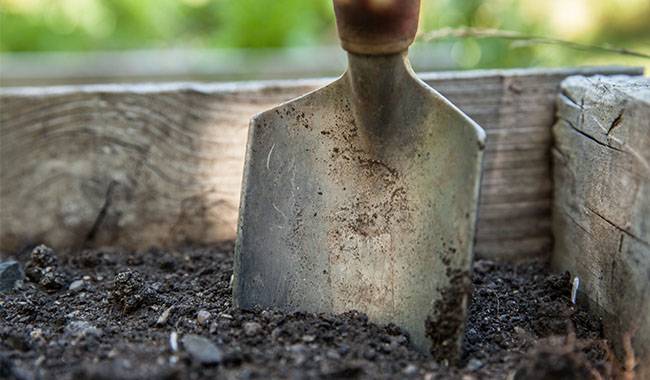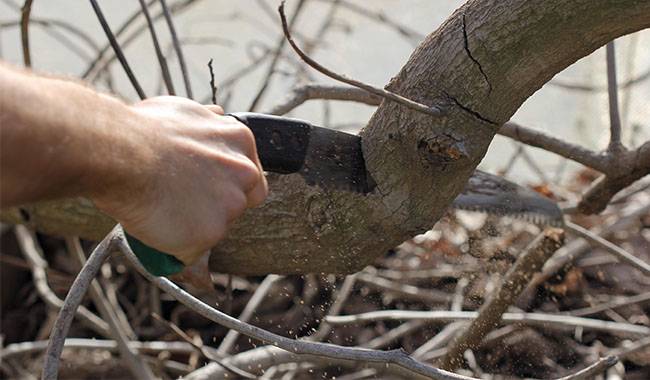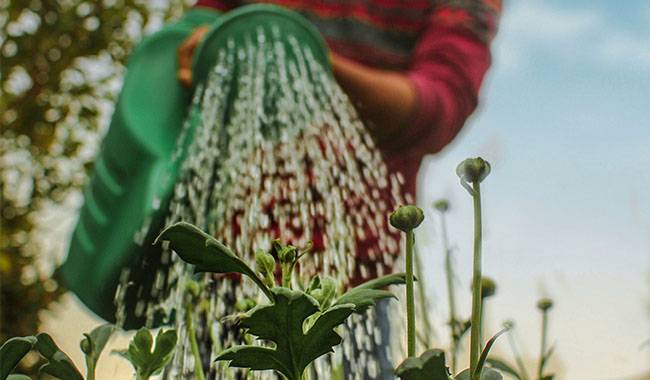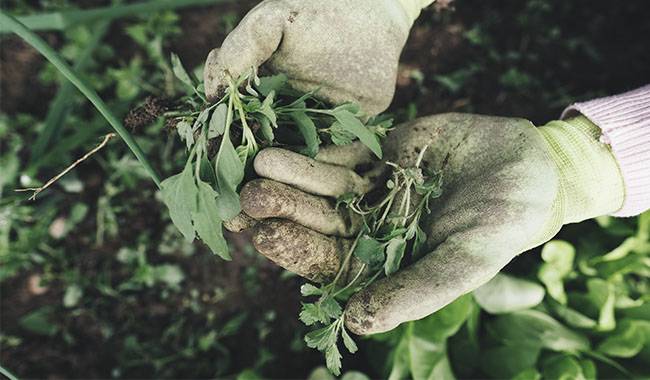
Everyone known that the saturation of various elements in the soil and the presence of bacteria in the soil are interdependent phenomena. Therefore, if there are not enough bacteria in the soil, the growth of plants, even if there is enough of various elements in the soil, will be retarded and they will develop atypically and incorrectly.
To eliminate the lack of bacteria in the soil, special fertilizers are made, called Biofertilizers. these fertilizers are classified as absolutely safe for humans and animals and harmless to the environment.
These fertilizers are preparations called microbial inoculants that improve the nutrition of all plants without exception. Interestingly, the composition of Biofertilizers themselves does not contain any nutrients, but once they fall into the soil, they begin to normalize the biochemical processes that occur in the soil, so that plant nutrition becomes more qualitative and adequate.
TYPES OF BIOFERTILIZERS
Thus microbial inoculants, despite the complex combination of terms are ordinary biological preparations that have live cultures in their composition, for example, in yogurt. Such fertilizers can be used both for treating seeds at the time of sowing and for applying them to the soil during the sowing season, just like ordinary root dressings.
All inoculants are divided into several groups – these are biofertilizers, as well as plant stimulants, mycorrhizal inoculants, and agents for biological plant protection.
Biofertilizers
Starting with biofertilizers, these groups are discussed in more detail. Among the components of these fertilizers are tubercle bacilli, which are present in the roots of leguminous crops and some shrubs, such as buckthorn. The effect of nodule bacteria is to greatly increase the supply of minerals and organic compounds so that plants will always be in a better supply of phosphorus, magnesium, calcium, iron, and of course zinc.
Plant stimulants
Let’s go one step further – plant stimulants, these are also biofertilizers, but they are actually synthetic plant growth activators, i.e. phytohormones. These substances cause the plant organism to grow faster and develop a complete root system in combination with the asexual system.
Mycorrhizal inoculants
Another group is mycorrhizal inoculants, which consist of various fungi that form mycelium. In this way, the plant’s own root absorption capacity is also increased, so the plant receives more nutrients and thus develops better, flowers more actively, and produces a full annual yield.
Biological control agents
Biological treatments are a good alternative to chemical herbicides. However, biocontrol agents are most often used to improve immunity and thus prevent disease. Biological therapies are usually based on bacteria, which have the strongest antagonistic effect. These bacteria are most effective against infections that occur in cereal crops, but they can also be used on fruit as well as berry and vegetable crops.
Preparation of EM
Effective Microorganisms (EM) products contain live organisms. Applying them annually to the soil will eventually restore fertility that has been wasted through years of use. Using EM preparations will increase yields, improve the taste of fruits and extend their storage life. If plants are treated with EM preparations, their immunity and resistance to pests and diseases will improve.
EFFECTIVENESS OF BIOFERTILIZERS

Biofertilizers became widely used immediately after the discovery of their symbiotic interaction with legumes. These bacteria take oxygen from the air and synthesize nitrogen, which is absorbed by the plants, and the same nitrogen in turn feeds the bacteria. The modern industry now synthesizes and markets tubercle bacilli, the best known of which are rhizobacteria and nitragins.
Nitragin
This drug was first obtained in Germany, where it was positioned specifically for feed on behalf of the legume family. The drug is based on the tubercle bacilli we described above and they are synthesized in the laboratory. The drug can be produced either as briquettes, as a powder (off-white, with a moisture content of up to 7%), or as a liquid.
Interestingly, this drug does not just lie on the shelf waiting for your purchase, do not forget that he is alive, so it is stored in the accumulator of Nitroglycerin – a substance consisting of bean compost, straw, peat, charcoal, and some other elements.
When this preparation is applied to the soil, the nodule bacteria contained in it attach to the root hairs of legumes and form nodules, in which their multiplication takes place.
Such a preparation can be obtained independently, for which you need to take the legumes, especially their roots, remove all the soil from the roots, wash the roots with water and dry them in a room without light. After that, the roots should be pressed and you will get some kind of Nitragin completely free.
It is important to know that Nitragin is just like what you get at home from the roots of legumes and can only be used under plants belonging to the legume family.
Rizotorfin
The composition of this biofertilizer contains sterile peat, which allows the tubercle bacillus to remain viable and active for a considerable period of time. However, modern rhizotorfin preparations are produced not only on the basis of peat but also in the fluid state. In order to create rhizobia under industrial conditions, it is necessary to dry peat at a temperature of one hundred degrees Celsius and then grind it into a powder.
In order to neutralize this powder, it is possible to use ordinary chalk and then raise the humidity of the powder to 35-45% by adding water, and then the resulting mixture can be placed in an airtight package. Then we simply irradiate this mixture with gamma rays in a special device and introduce the tubercle bacilli using an ordinary syringe, and the preparation will be completely ready for realization and, of course, for further dissemination in the soil.
Talking about the application: the dose of this preparation is very small, not more than two hundred grams per hectare. As we have already mentioned, this fertilizer is also available in liquid form, and it is clear that this is not a ready-made working solution, but something like a syrup that must be diluted with water.
The rate is the same, but if you decide to soak the seeds in the initial solution, then it must be literally a few drops per liter, then soak the resulting solution in gauze and soak the seeds in it for a day. You can leave the seeds unsoaked and just treat them with this solution (on the day of sowing, and 15-20 hours before sowing).
By the way, you can do this preparation at home, but first, you have to make the “starter”. To do this in summer, you need a container, where you put finely cut pieces of plants, filling about a third of the container. It remains a tightly closed container and placed in a well-lit place. After a few days, the mixture will begin to ferment and a very unpleasant rotten smell will appear.
Once you feel it, open the lid and fill the container with water, which is necessary for the fermentation to mature. After filling the tank with water, wait about 9-11 days in warm weather and 15-20 days in cool weather, then dilute the mixture with water, mix it very well to the maximum homogeneous composition, and pour it into the compost pit. That’s basically it: then you can take it out of the pit and put it to good use.
Don’t forget that both Rhizobium and Nitrobacterium are designed for fertilizing legumes only.
Azotobacter-Biofertilizers
This preparation can be safely called the most authentic nitrogen fertilizer. This fertilizer can be soil, peat, and dry. In our opinion, the most interesting is dry matter, in fact – it is the cell with a series of auxiliary components. The sequence of operations for the production of this fertilizer does not differ much from the one for the manufacture of nitroglycerine.
However, the growth of the culture, the so-called initial component of the preparation, is carried out on a fully nourished soil, to which are added in advance: iron sulfate, manganese sulfate, and molybdate.
Then, the dried preparation in its final state is simply dispensed in a package. Do not forget that this preparation can only be stored for ninety days and must be kept at a temperature no higher and no lower than -57-60°F (14-16)°C.
It is worth noting that nitrogen bacteria in soil and peat host a bacterial culture that can only multiply in a solid environment. In order to produce this fertilizer, it is necessary to use ordinary soil or peat as a base, then the obtained substrate is well sieved to obtain the most homogeneous mass, to which 0.1% of calcium superphosphate and 2% of ordinary lime are added.
The next step is to repack the preparation into 500 g bottles, add water to them until the water content is 45-55%, and then stopper the bottles with cotton wool. The last step is disinfection. Next, in order to prepare the material for sowing, you need to use ordinary agar gel with the mandatory addition of various mineral salts and sugars.
The mixture obtained earlier is simply transferred to the prepared nutrient medium and grown under sterile conditions to the desired volume. This preparation can be used for 60 days, sometimes a little longer.
What is the use of Nitrobacterium? It facilitates the enrichment of compost, increases the growth activity of seeds, and strengthens the immunity of seedlings. According to consumer reviews, the use of this drug can increase the harvest by more than ten percent.
By the way, few people know that the powdered preparation can be safely sprinkled on grains, but the liquid solution is used at planting to treat potato tubers and the root system of young seedlings. On a hectare of land, you only need 150 g of the substance and 50 liters of this solution.
Phosphobacterin
Obviously, the basis here is no longer nitrogen, but phosphorus. The bacteria of this drug have the form of bacilli that convert the complex phosphorus compounds contained in the soil into simple ones, that is, phosphorus compounds that are easily absorbed by plants from the soil. In addition, this drug in the soil stimulates the formation of various bioactive substances and enhances the growth process of plants.
The technology of phosphomycin production does not differ much from that of nitrogenous bacteria as well as tubercle bacilli. However, here the nutrient medium is formed from corn, molasses, water, chalk, and ammonium sulfate. All in all, the culture usually takes two days and the result is a biomass of cells, which still have to pass through the centrifuge and dry. Then you need to mix the dry material with the filler, bag it and sell it.
Phosphobacterin is ideal for soil fertilization because they have enough organic matter containing phosphorus. Yields of potatoes, various cereals, and edible beets were significantly increased by up to 30% when this preparation was used.
If you want to treat the seeds before sowing, you should mix it with soil or wood ash in a ratio of one to forty. The dosage of the preparation is very small, only 5 grams per hectare is needed to fertilize the soil.
Potato tubers are treated as follows: 15 g of the preparation is diluted in 15 liters of water and the tubers are sprayed with an atomizer before planting. It was reported that after this treatment, potato yields increased by 10%.
Environmentally friendly synthetic fertilizers – fertilizers made of bacteria
Completely safe fertilizers, belonging to the microbial synthesis of substances of fungal producers with a significant stimulating effect. This preparation is produced in liquid form. What are the benefits of using this drug?
It activates photosynthesis, stimulates the growth of roots, leaf volume, buds, increases the size (and even the number) of fruits, improves the resistance of plants to lack of water and frost, strengthens their immunity, increases resistance to diseases and pests.
In addition, the preparation is used to increase the germination of seeds, especially those stored for a long time, to improve the formation of roots during the rooting of green plugs, and with its help, to accelerate the ripening of fruits and berries, increasing the yield of fruit, berry and vegetable crops by up to 50%.
As a rule, this preparation is used to improve the soil composition and is carried out two or three times, starting from the sowing of seeds and ending with the crop ripening period. Seeds can be soaked in a working solution of the preparation or treated immediately before sowing; plants are usually treated by foliar spraying. As a rule, you only need 1.5 ml of this fertilizer per hectare.
PREPARATION OF EM
There are now a large number of EM preparations that work on the soil in different ways. A tested one like “Hybrid EM preparation” mixes more than sixty pure strains of various microorganisms in symbiosis. This preparation contains lactic acid bacteria and yeasts, fermenting fungi and actinomycetes, as well as several other ingredients.
All the microorganisms of this preparation are dormant and in a liquid medium before being applied to the soil. In order to activate them, they need to be introduced into the soil.
The use of EM medication inhibits the development of pathogens, reduces the amount of toxins that may be present in the soil, and restores its fertility. Among other things, the drug stimulates the growth and development of plants and accelerates their maturation.
EM homemade preparations are suitable for foliar and root dressings, they actively recycle organic matter in the substrate, releasing and providing the components needed by the plant, thus increasing the yield and improving the taste of the product. Due to the influence of these preparations, humus is formed and various organic wastes are composted within 60-70 days with almost no unpleasant odor emitted.
SUMMARY
Because any soil becomes depleted over time, and then the crops are catastrophically reduced. If this happens, one should use biofertilizers, which are completely harmless, enter the soil and form a symbiotic relationship with plants, helping to improve soil quality and increase yields.







